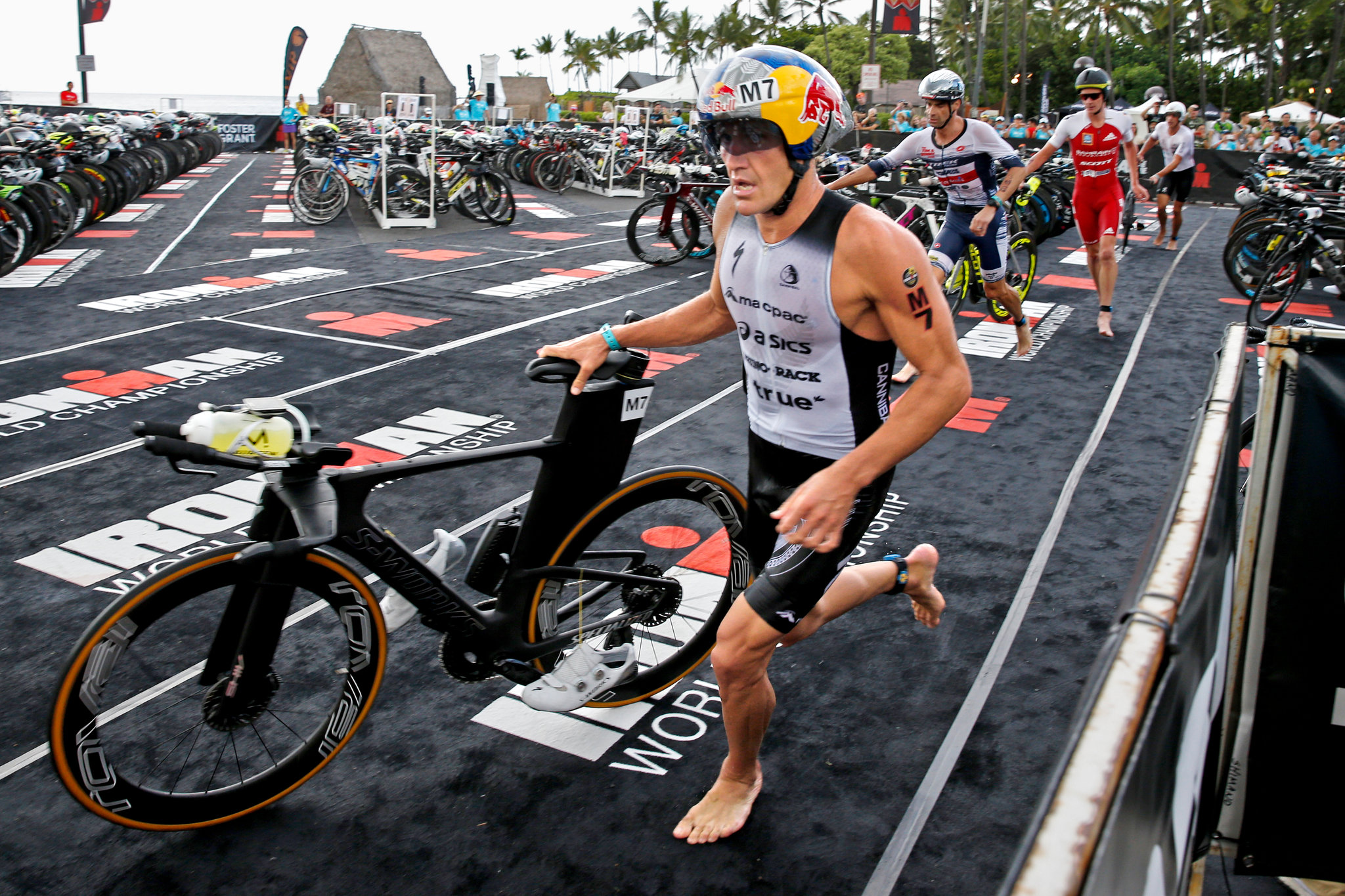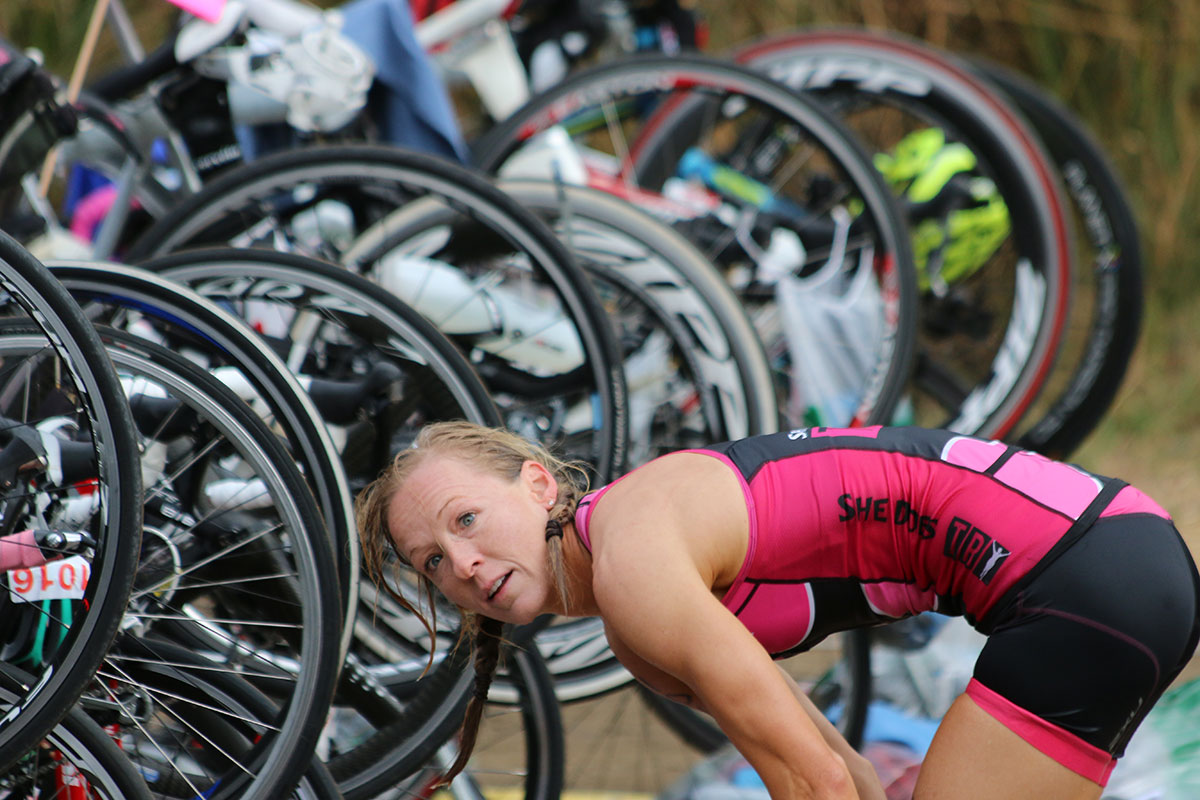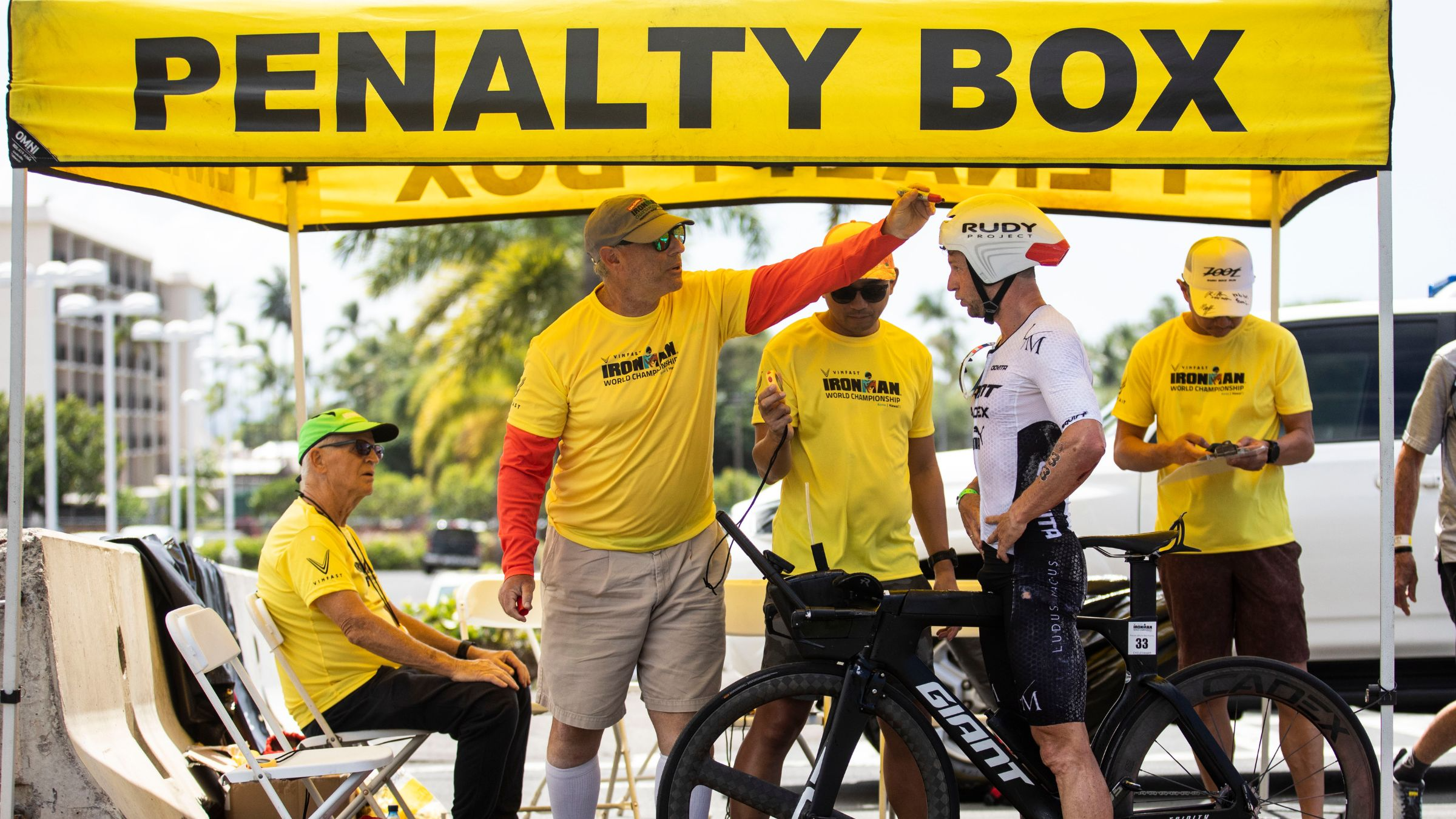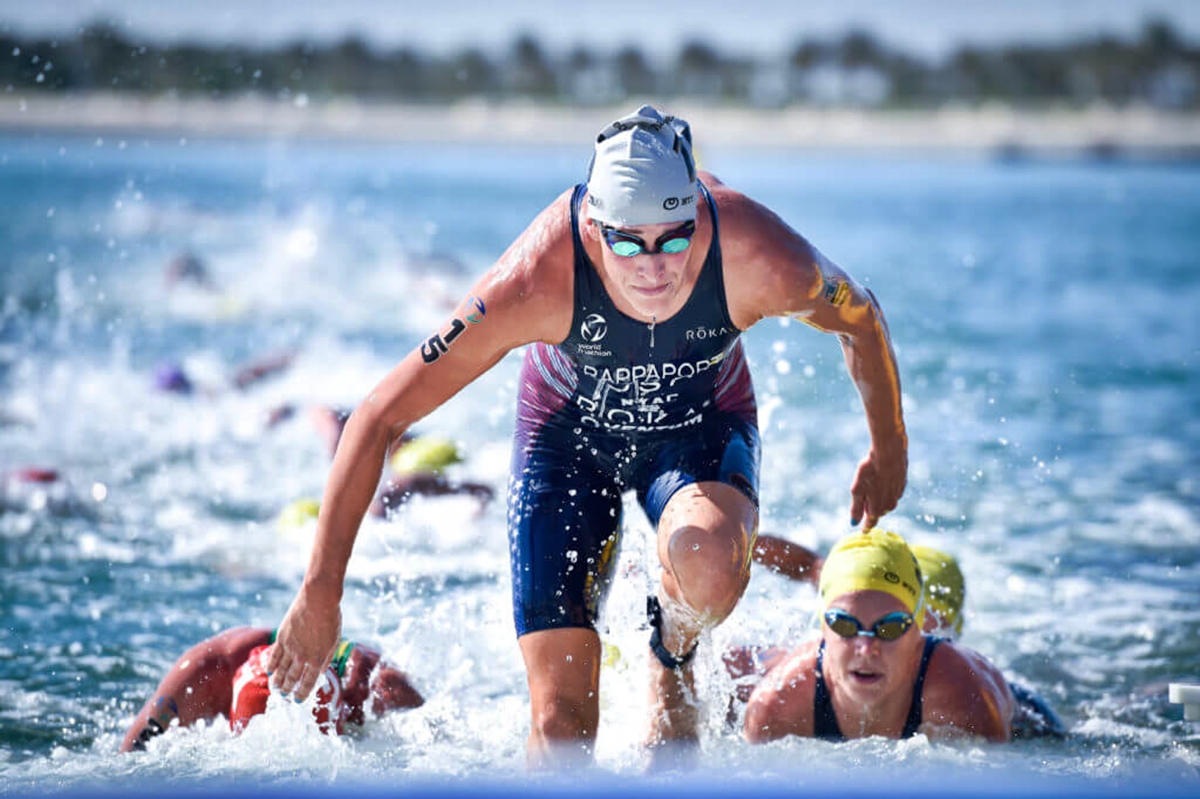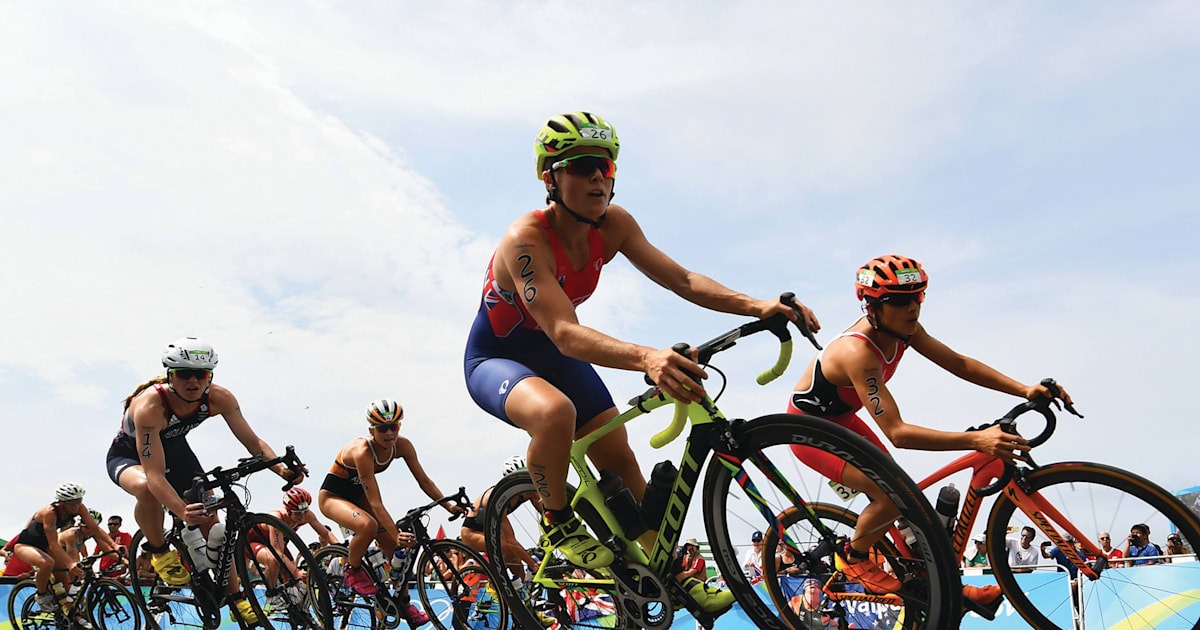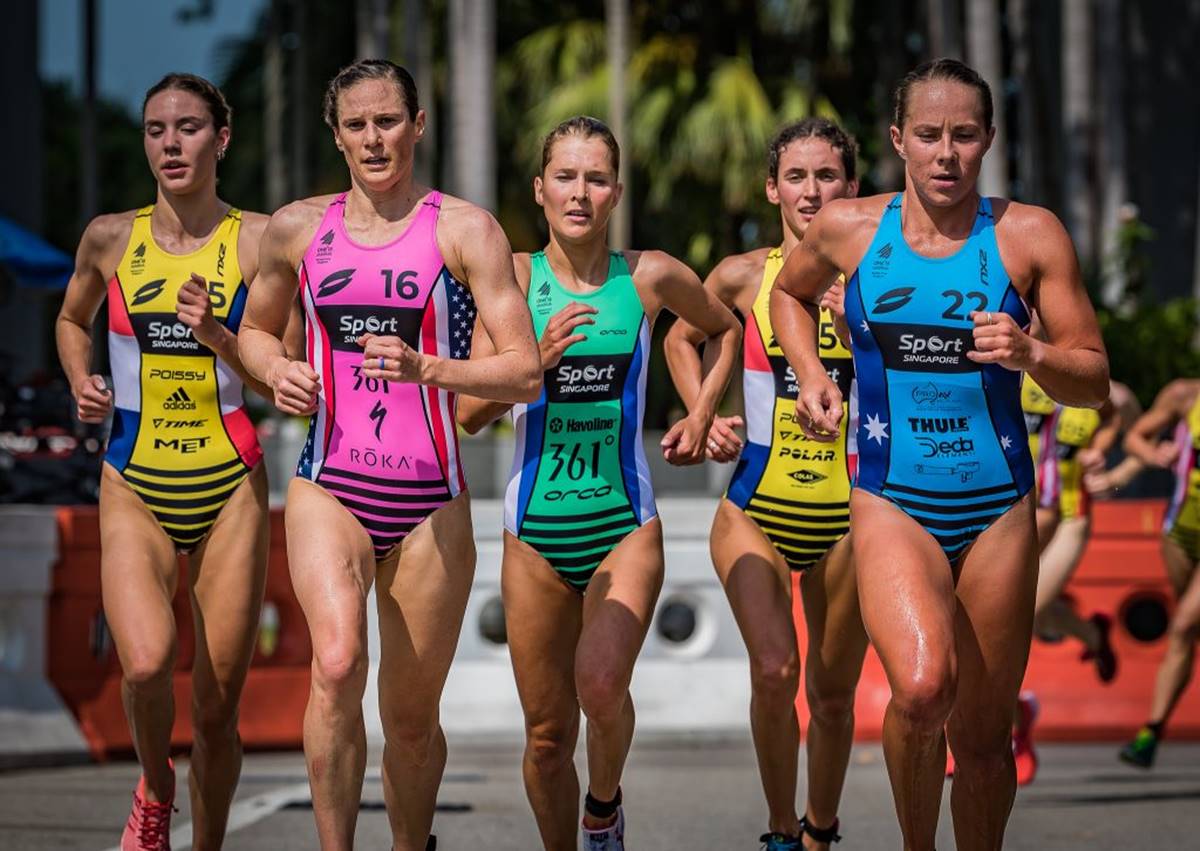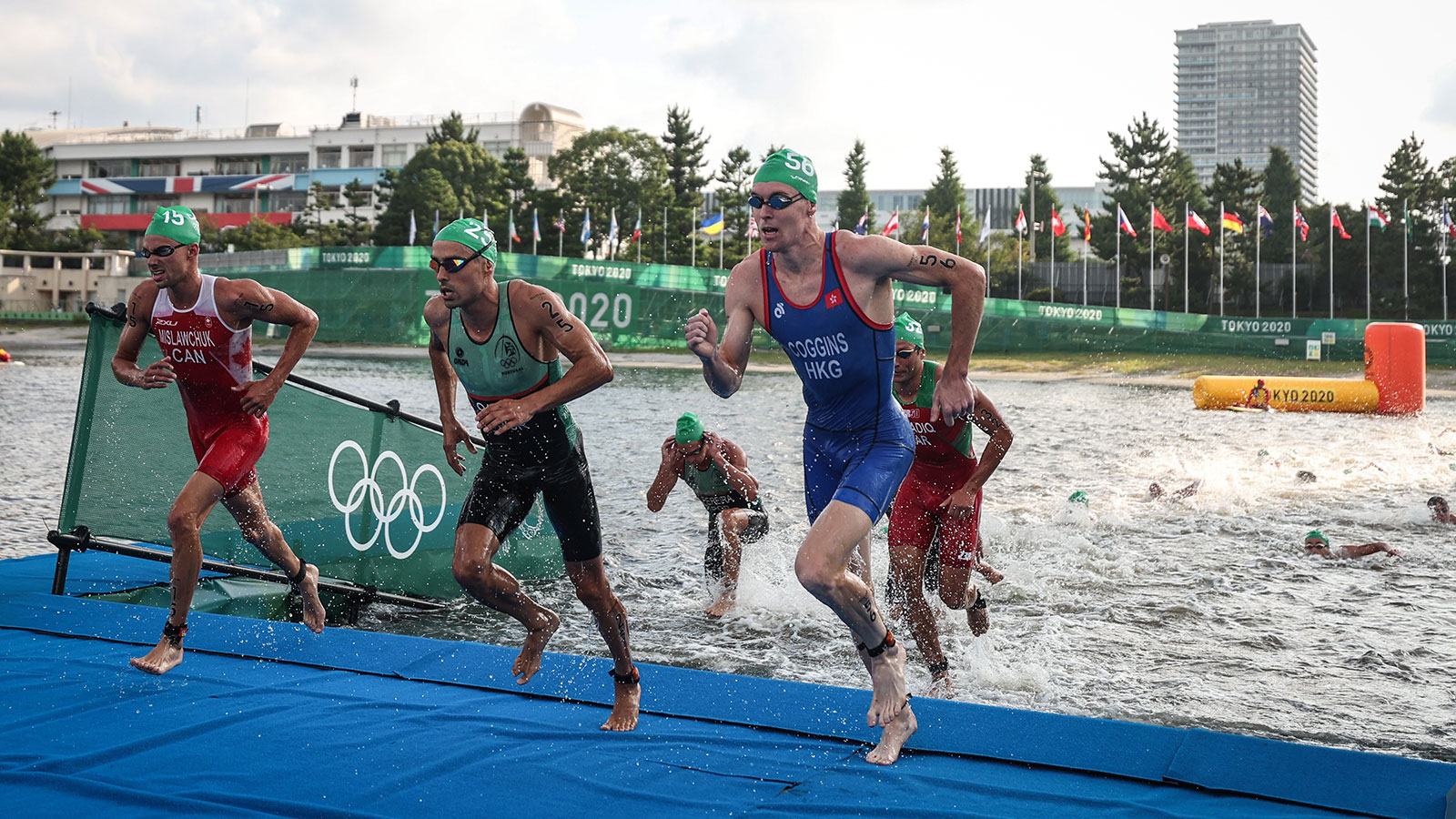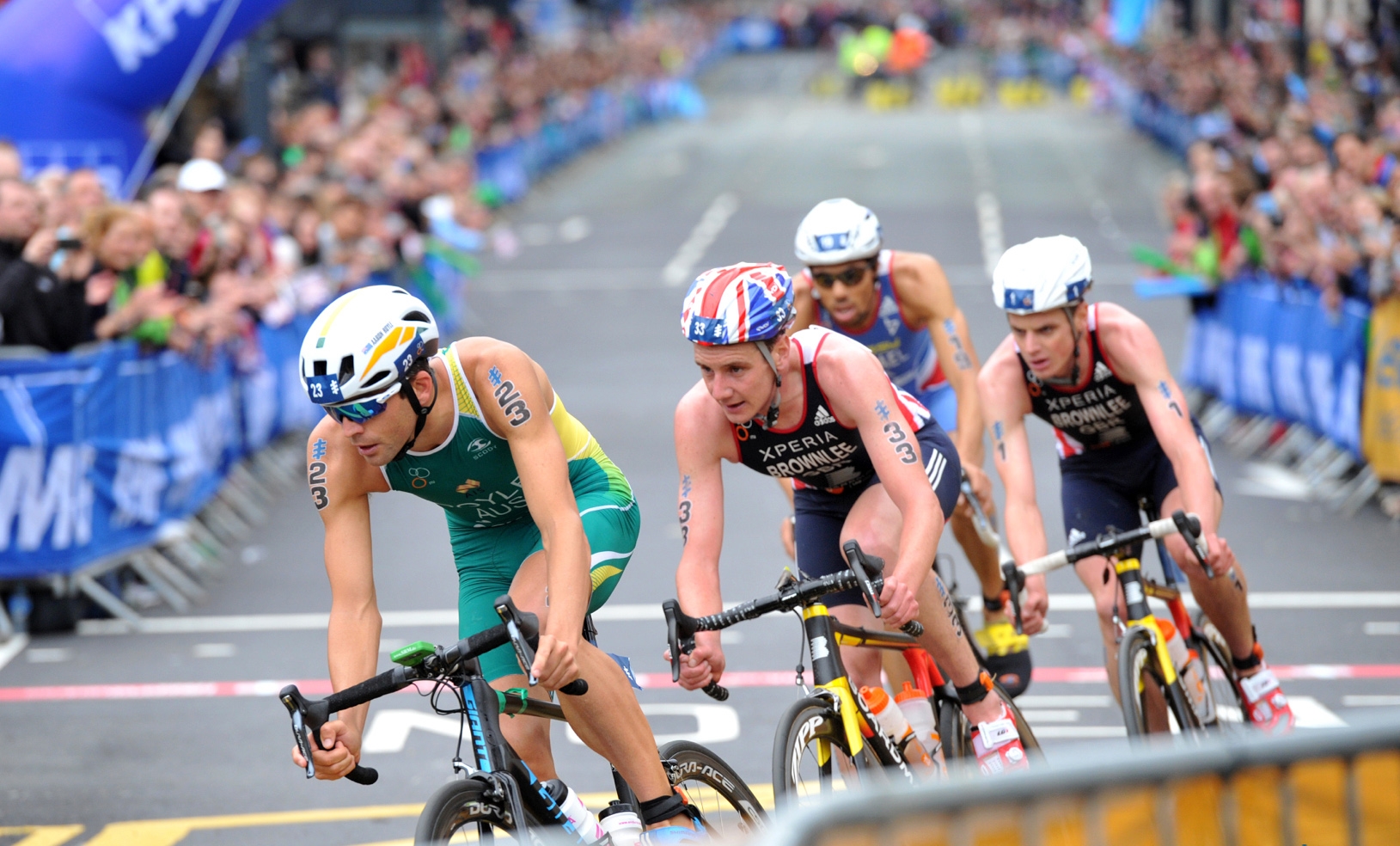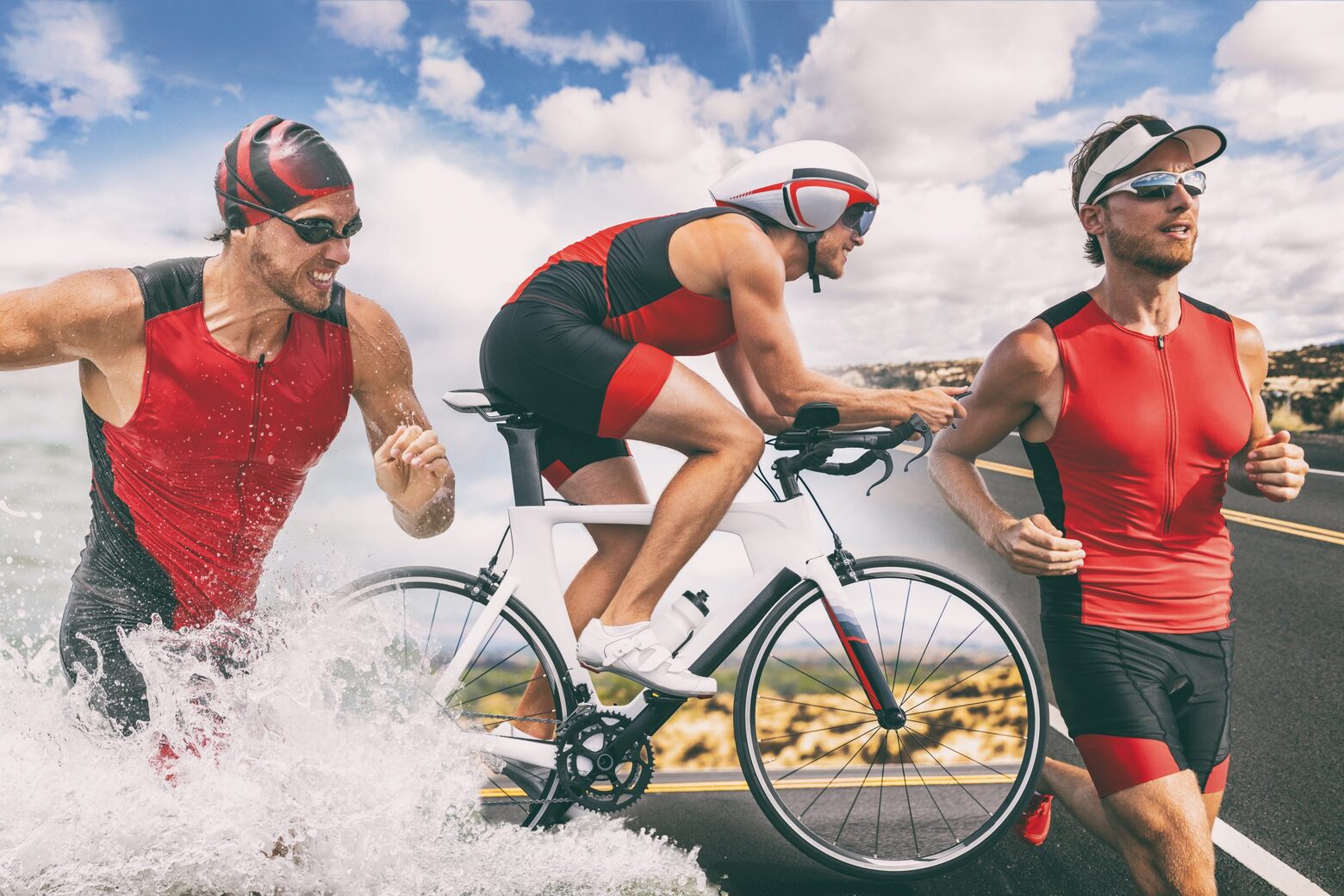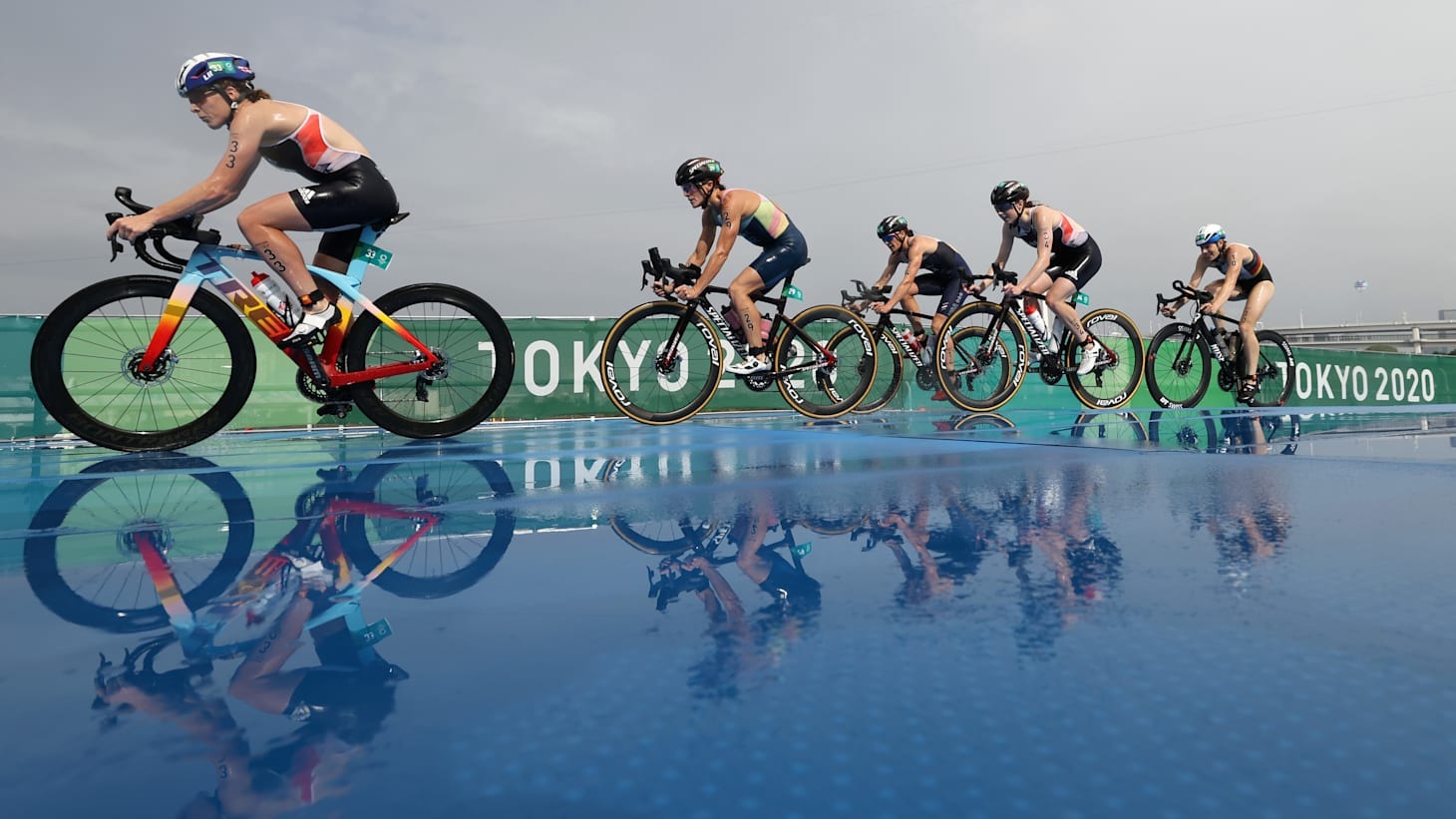

Featured
Who Does The Second Leg Of A Triathlon
Modified: January 2, 2024
Who Does The Second Leg Of A Triathlon | Featured
Introduction
The world of triathlon is an exhilarating realm that challenges athletes both physically and mentally. Consisting of three disciplines – swimming, cycling, and running, the triathlon pushes competitors to their limits as they navigate through each leg of the race. In this article, we will explore the intricacies of the second leg of a triathlon, often referred to as the “bike leg.”
As triathlons have gained popularity worldwide, it is important to understand the unique demands placed on athletes in each leg of the race. While the swim leg tests their aquatic skills and the run leg pushes their endurance, the bike leg brings a whole new set of challenges and strategies.
Throughout this article, we will delve into the role of the second leg in a triathlon, the participants involved, and the strategies employed to conquer this crucial segment of the race. So sit back, grab your helmet, and let’s explore the dynamic world of the second leg of a triathlon.
Understanding the Triathlon
Before diving into the intricacies of the second leg of a triathlon, it’s important to have a basic understanding of what a triathlon entails. A triathlon is a multi-discipline endurance race that combines swimming, cycling, and running into a single event. The sport originated in the 1970s and has since gained massive popularity, attracting athletes of all ages and skill levels.
Triathlons are typically divided into different race distances to accommodate participants with varying levels of fitness and experience. The most common race distances are sprint, Olympic, half Ironman, and Ironman. Sprint races are the shortest, with a 750-meter swim, a 20-kilometer bike ride, and a 5-kilometer run; while Ironman races are the most demanding, with a 3.8-kilometer swim, a 180-kilometer bike ride, and a 42.2-kilometer marathon run.
One defining characteristic of triathlons is their continuous nature, with athletes transitioning from one leg to the next without any breaks. This adds an element of strategic planning, as competitors must carefully allocate their energy and manage their pace throughout the race.
Triathlons are often conducted in various formats, including pool swims, open water swims, road races, and off-road courses. Some triathlons even incorporate unique challenges, such as obstacle courses or hilly terrains, to add excitement and further test participants’ skills.
The sport of triathlon has garnered a dedicated and passionate community, with athletes participating in races around the world. From elite professionals to recreational enthusiasts, the triathlon offers a platform for individuals to set personal goals, challenge themselves, and experience the thrill of crossing the finish line.
Now that we have gained a general understanding of what a triathlon entails, let’s shift our focus to the specifics of the second leg – the bike leg – and explore the role it plays in the overall race.
The Three Legs of a Triathlon
A triathlon consists of three distinct legs: the swim leg, the bike leg, and the run leg. Each leg presents its own unique challenges and requires specific skills and training. Let’s take a closer look at each leg:
- The Swim Leg: The first leg of a triathlon is the swim leg. Depending on the race format, the swim leg can take place in a pool, a lake, or even the open ocean. Swimmers must navigate through the water, often contending with waves or currents, and strive to complete the designated distance as quickly as possible. Proper technique, breathing control, and endurance are crucial in this leg.
- The Bike Leg: The second leg of the triathlon is the bike leg. This leg requires participants to transition from the water to their bikes and ride a specified distance. The bike leg can be conducted on roads, designated bike courses, or off-road trails, depending on the race. Cyclists need to exhibit strong cycling skills, maintain a steady pace, and make strategic decisions regarding gear selection and nutrition.
- The Run Leg: The final leg of a triathlon is the run leg. After completing the bike leg, athletes dismount their bikes and transition to running. This leg typically takes place on roads or designated running courses. Endurance, mental strength, and proper running technique are essential in completing the run leg efficiently. Participants must push through fatigue and often face the challenge of transitioning from cycling muscles to running muscles.
Each leg of the triathlon serves as a milestone towards the ultimate goal of crossing the finish line. Athletes must effectively manage their energy, transition smoothly between legs, and adapt to the different physical demands of each discipline. Now, let’s shift our focus specifically to the second leg of the triathlon – the bike leg – and delve into its intricacies.
The Second Leg of a Triathlon
The second leg of a triathlon, also known as the bike leg, is a critical part of the race that challenges athletes both physically and strategically. In this leg, participants transition from the swim to cycling and cover a specific distance on their bikes. Let’s explore the key elements of the second leg in more detail.
During the bike leg, athletes are required to showcase their cycling skills and endurance. Cyclists must efficiently mount their bikes after the swim leg and quickly find their rhythm as they navigate through the course. The terrain can vary from flat roads to hilly terrains or even off-road trails, depending on the race. This leg offers a unique opportunity for participants to showcase their technical prowess and strategic decision-making.
One of the crucial aspects of the bike leg is pacing. Athletes need to strike a balance between maintaining a steady pace and conserving energy for the remaining run leg. Going too hard or fast in the bike leg can lead to fatigue, making the run leg more challenging. Proper pacing allows athletes to leverage their cycling strengths while saving energy for the final leg of the race.
Another important consideration in the second leg is drafting. Drafting involves tucking in behind another cyclist to reduce wind resistance and conserve energy. In many triathlon races, drafting is restricted to maintain fairness among participants. However, in races where drafting is allowed, strategic positioning and maintaining the right distance to the cyclist ahead can provide a significant advantage.
Additionally, participants must be mindful of nutrition and hydration during the bike leg. As the longest leg in terms of distance, it is crucial to fuel the body adequately to maintain energy levels. Cyclists often carry nutrition bars, gels, or sports drinks to stay hydrated and replenish electrolytes during the race.
The bike leg often provides unique challenges that require adaptability and problem-solving skills. Participants need to be prepared to handle unexpected mechanical issues, such as flat tires or gear malfunctions. Carrying a basic toolkit and having the know-how to make minor repairs on the go can save valuable time and help athletes stay in the race.
Overall, the second leg of a triathlon, the bike leg, plays a vital role in determining the outcome of the race. It requires a combination of physical fitness, technical expertise, and strategic decision-making. By pacing themselves, leveraging drafting opportunities, maintaining proper nutrition, and being prepared for any unforeseen circumstances, athletes can excel in the second leg and position themselves for a successful overall performance.
Role and Participants in the Second Leg
The second leg of a triathlon, the bike leg, plays a crucial role in the overall race. It presents participants with a unique set of challenges and requires specific skills and strategies to excel. Let’s explore the role and the diverse range of participants in this leg.
In the triathlon, the bike leg serves as a bridge between the swim leg and the run leg. It allows participants to transition from the water to the bike and prepare their bodies for the final segment of the race. The bike leg tests athletes’ cycling abilities, endurance, and tactical decision-making skills.
Participants in the second leg of a triathlon vary in terms of skill level, age, and experience. At one end of the spectrum, elite triathletes compete at the highest level of the sport. These professionals train rigorously to optimize their cycling performance and gain a competitive edge. Their expertise in bike handling, speed, and strategic decision-making sets them apart in the race.
Intermediate and recreational triathletes also play a significant role in the bike leg. These participants may not have the same level of experience or training as elite athletes but still display a great passion for the sport. They challenge themselves to improve their cycling skills and aim to achieve personal goals in the race. The bike leg provides an opportunity for them to test their endurance, speed, and mental fortitude.
Age-group participants form an integral part of the triathlon community and the second leg. They are typically grouped by age ranges and compete within their designated categories. Age-group athletes come from diverse backgrounds and range from beginners to seasoned triathletes. In the bike leg, they strive to perform at their best, overcome personal limitations, and celebrate the spirit of friendly competition.
Within the bike leg, specific categories such as relay teams also exist. These teams consist of multiple members, each responsible for completing one of the three legs. For example, one member may specialize in the swim leg, while another focuses on the bike leg. The role of participants in relay teams varies, but in the bike leg, team members work together to maintain a smooth transition between legs and optimize overall team performance.
It’s worth mentioning that in certain triathlons, there may be separate categories for different types of bikes. For instance, participants using conventional road bikes, time trial bikes, or mountain bikes compete within their respective divisions. This allows for fair competition and acknowledges the varying advantages and disadvantages of different bike types on certain terrains.
Regardless of their skill level or the type of bike they ride, all participants in the second leg contribute to the excitement and camaraderie of the triathlon. Each person plays a role in creating a vibrant and supportive atmosphere, inspiring one another to push their limits and cross the finish line.
Strategies and Techniques for the Second Leg
The second leg of a triathlon, the bike leg, requires careful planning, smart strategies, and effective techniques to maximize performance and achieve success. Let’s explore some key strategies and techniques that participants can employ to excel in this critical leg of the race.
1. Pacing: Proper pacing is essential in the bike leg to maintain a steady effort throughout the course. Starting too fast can lead to early fatigue, while starting too slow may result in lost time. Understanding one’s fitness level and setting realistic goals for the bike leg allows athletes to pace themselves effectively and conserve energy for the run leg.
2. Drafting: When permitted in a race, drafting can be a valuable strategy to reduce wind resistance and conserve energy. Positioning oneself behind another cyclist in a strategic manner creates a slipstream effect, allowing for a smoother ride. It’s important to maintain a safe distance and follow drafting rules to avoid penalties.
3. Gear Selection: Choosing the right gears for the course profile is crucial. Prioritize gear selections that optimize pedaling efficiency on climbs, descents, and flats. Practice shifting techniques and become familiar with your bike’s gear ratios to adapt to different terrains smoothly.
4. Bike Handling Skills: Developing strong bike handling skills is important for navigating turns, descents, and obstacles during the race. Practice cornering techniques, braking control, and maintaining stability at high speeds to feel confident and in control on the bike.
5. Nutrition and Hydration: A well-fueled body is vital for maintaining energy levels throughout the bike leg. Create a nutrition plan that includes a balance of carbohydrates, proteins, and electrolytes. Experiment with different sports nutrition products during training to find what works best for you. Don’t forget to hydrate adequately, sipping on fluids at regular intervals to prevent dehydration.
6. Mental Focus and Motivation: The bike leg can be physically and mentally demanding. Stay mentally focused and motivated by setting small goals or landmarks along the course. Maintain positive self-talk and break the leg down into manageable segments to stay mentally strong and push through any challenging moments.
7. Transition Efficiency: A smooth transition from the swim to the bike leg can save precious seconds. Practice transitioning from the water to cycling, ensuring your bike shoes, helmet, and other gear are arranged and easily accessible. Develop a transition routine and rehearse it during training sessions to optimize efficiency during the race.
8. Race Course Familiarization: Familiarize yourself with the race course beforehand, if possible. Study the elevation profile, road conditions, and any technical sections to develop strategies and make informed decisions during the race.
9. Mental Resilience: The bike leg can present unexpected challenges, such as mechanical issues or adverse weather conditions. Develop mental resilience to adapt to these circumstances. Maintain a calm and focused mindset, have a basic understanding of bike mechanics for quick fixes, and be prepared for changing conditions.
Utilizing these strategies and techniques in training and during the actual race can greatly enhance performance in the second leg of a triathlon. Each participant’s individual strengths, weaknesses, and experience level will influence their approach. Experiment with different tactics during training sessions to determine what works best for you and adapt as needed during the race.
Conclusion
The second leg of a triathlon, the bike leg, is a pivotal part of the race that demands both physical prowess and strategic thinking. It serves as a transition from the swim to the run and requires participants to showcase their cycling skills, endurance, and mental fortitude. From elite athletes to recreational enthusiasts, triathletes of all levels and backgrounds actively participate in this leg, contributing to the vibrant triathlon community.
In the bike leg, participants face various challenges and must employ effective strategies and techniques to optimize their performance. Pacing oneself, leveraging drafting opportunities, selecting the right gear, and maintaining proper nutrition and hydration are key factors that contribute to success. Additionally, developing strong bike handling skills, staying mentally focused and resilient, and ensuring efficient transitions all play a crucial role in achieving one’s goals in the bike leg.
As with any leg of a triathlon, the bike leg provides an opportunity for personal growth, setting and achieving goals, and experiencing the thrill of competition. It fosters a sense of camaraderie and sportsmanship among participants, regardless of their skill level or the type of bike they ride. Each participant’s journey through the bike leg, with its unique challenges and triumphs, adds to the tapestry of the triathlon experience.
So, whether you’re a seasoned triathlete aiming for a podium finish or a first-time participant seeking to test your limits, the bike leg offers an exciting and challenging adventure. Embrace the strategies, techniques, and adrenaline-filled moments that the bike leg brings, and may it propel you closer to accomplishing your triathlon goals.
